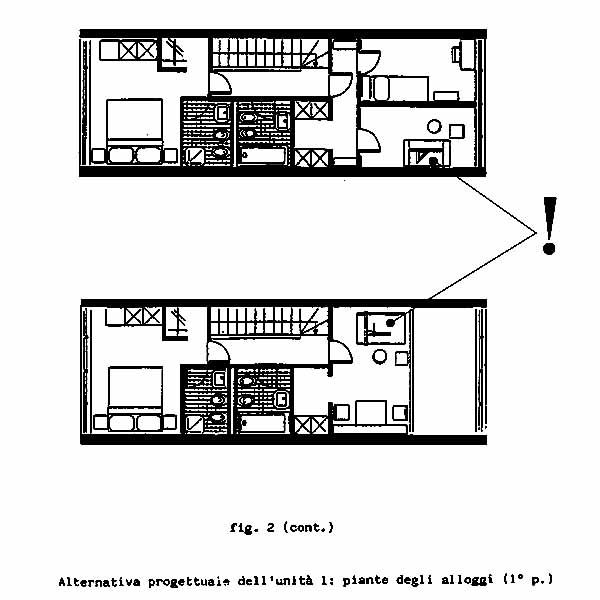
(Lecture at the Technic University of Delft 1990 / "The binary house & interaction")
In fact, users are already beginning to argue which hardware, or which software package would be better suited for architects. Despite all the controversies about the use of computers, most architects would at least agree now that the computer can be used as a "draughtsman".
I suppose you all are familiar with CAD, with the use of macros, how to insert elements, shift and rotate them - the spirit moving tables on the monitor. The advantage that the use of the computer offers - post-modernist compositions are possible because stored macros can be applied.
You all know how good the quality of the representations is: wire frame, hiden line, solid or shade. Drawings can be produced which look "real". Different surface structures and materials can be selected, light sources can be placed, shadows cast. Diverse movements in space can be carried out. I suppose you are familiar with this from the various computer games, which basically calculate individual perspectives from a single data record very rapidly, and thus create animation, give the illusion of movement. The competition amongst software producers concentrates on the production of the most realistic representations. The aim is landscape painting, the art of portrayal in the classical meaning of the term. What is even more important, though, is that professional software packages for architects include various jobs, connecting grafics with tenders and so on.
The computer thus imitates procedures which are usually carried out consecutively by hand.

36013 Rome University
Produced around l985: not by me ! I like the picture, however, because it makes one very important point: tee and set squares, or here in the other room a draughting machine, drawn by the computer! Simply absurd! Even the layout typology is very familiar! I, for my part, find it is absurd that at the close of the 20th century such drawings are produced at all, that computers are used to produce such designs. To me, this series of demo drawings appears to be indicative of the usual attitude of "let's pretend nothing has changed".
The use of computers in this area is pragmatic, I would call it imitative. To be more accurate, imitative in two ways, since, firstly, processes are being imitated, and secondly, familiar architecture is being imitated, well-known pictures are being reproduced. The criterium for evaluation would thus be: was it a correct imitation? was it a correct reproduction? At times, the argument put forward is: the computer is faster. But, basically, this argument is rather banal. Such an argument has nothing to do with designing, even less with architecture. Since most colleges of architecture today neither engage in research nor in teaching, the scene is dominated above all by the large computer concerns.
Why software producers only develop imitative programs is easy to explain - they are usually computer analysts, and not particularly interested in architectural issues. The reason why, on the other hand, the architects - despite their almost legendary "lust for the limelight" and despite their view of themselves as belonging very much to the avantgarde - are so conservative when it comes to using computers, might be because of their largely charismatic self-appraisal; they fear computers might destroy their separate identity, their individual mark, their trademark.
This evening, however, I don't want to discuss this highly interesting area of pragmatic-imitative designs. You can imagine how well eclectic or post-modernist buildings can be composed in this manner. What I want to do is try to introduce some of my ideas on this subject, where I think there are opportunities to go beyond the pragmatic-imitative use of the computer.

36015 Abacus (ca. 1984)
The ruined draughting machine, which of course was drawn by computer, shows very clearly that quite a few things could be jettisoned. In this context, I am reminded of the analyses carried out by Marshall McLuhan concerning the effects of the printing press and the electronic media. Based on his theory, which he formulated in the 60's, "the Medium is the Massage", or "the Medium is the Message" I see now an opportunity that electronic aids will help the architects to come up with new design methods, and subsequently with new architectures.
We have reached a stage which is reminiscent of the time after perspective drawing had been "invented" - in Europe starting with the Renaissance. We can examine how the perspective drawing had revolutionized architectural practice. I therefore uphold the theory that - seen from the point of view of the medium - EDP and CAD have a similarly far-reaching impact on architectural concepts.
The outdated theory - prevalent in architecture - of "function-form-construction" is replaced by the theory of the binary house. (all the pictures that I will now show were produced by me, over a period of ten years.) In explaining the binary house, I want to closely follow the internal logic of the machine and its visualizations for external apperception, and I shall in the following refer to the "interaction" with the computer, meaning the manipulations in the computer.
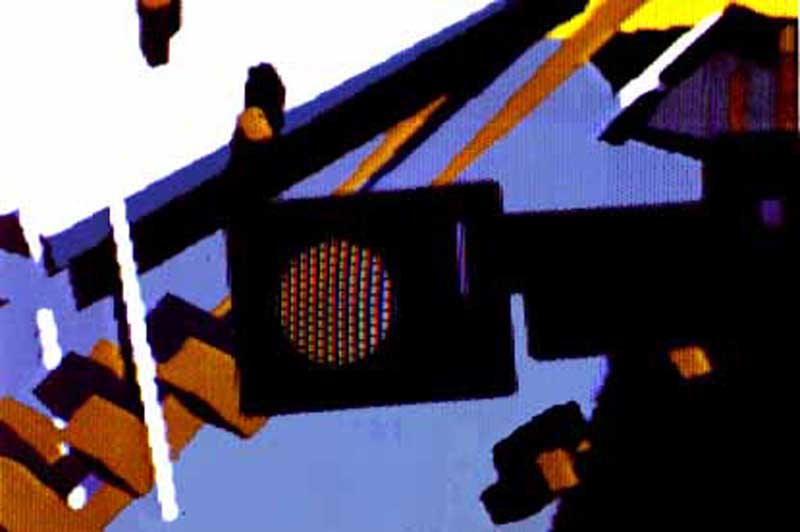

87337 Zoom/Magnifying glass 87352 Bits of
lines flying I
The graphics module of the CPU builds up the pixel from the red-green-blue trio pitch of the electronic beam on the monitor. The pitch size is determined by the monitor, the size of the pixel by the resolution of the graphics module and the program. Colours and patterns provide for better distinction of the lines on the monitor. The red-green-blue colours of the trio pitch are a fact, and not a colour concept.Trio pitches and pixels make up dots, lines, areas, letters, figures - depending on the program - this applies to the graphics program just as well as to the word processing package. As the monitor works exclusively with electronic signals, electronic superposition can produce for instance an addition by genlock:A single data record can take on different forms on the monitor: I'd like to show you a series of pictures which rely on the same data record, yet these same data have produced different graphics:
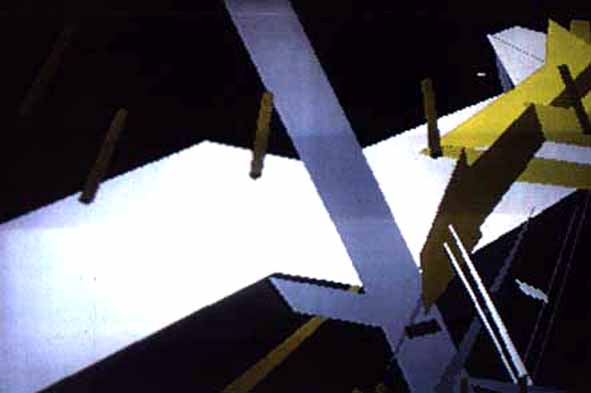
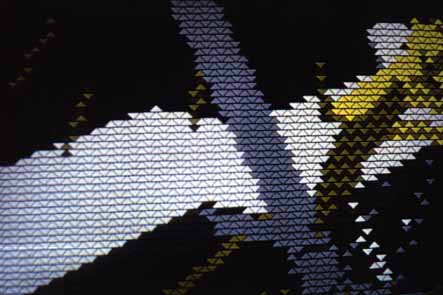
88012 of course in graphics mode, multi-colour 88013 multi-colour,
coarse triangular grid
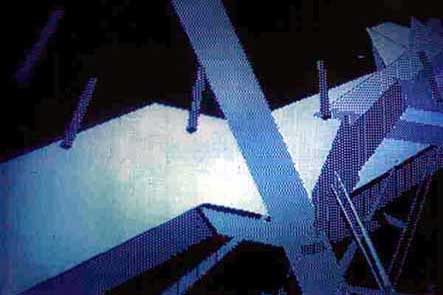
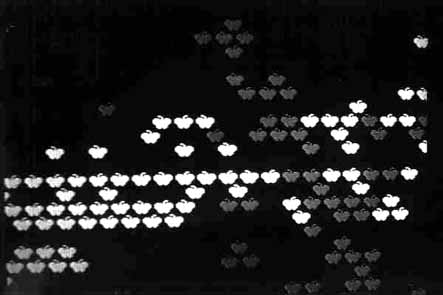
88014 unicoloured, fine grid 88015 or from apples
Data files of coordinates can for example be loaded into a music program and be perceived as a tune. Whether graphics or music, they are not the representations of something that previously had not been articulated, they are independent phenomena, they are facts, just as the coordinates are facts.
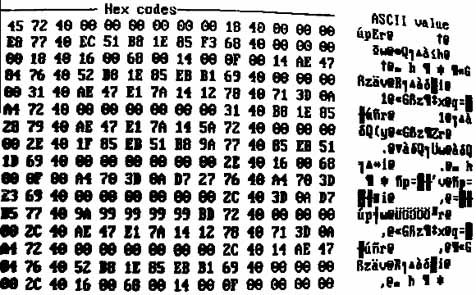
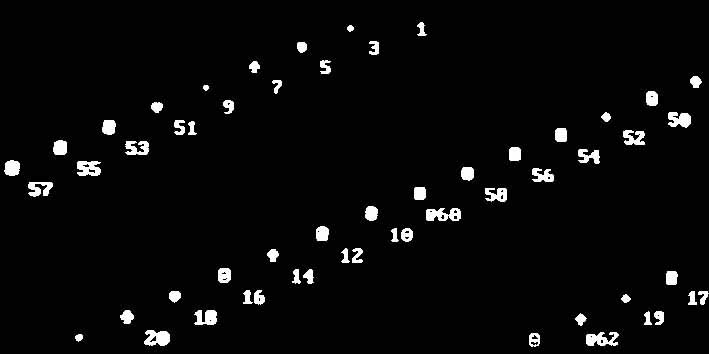
36020 36022
Hex-ASCII instead of apples, the data can be presented as bananas, like with the slot machine, or by means of the editor they might be presented in binary notation "Open slot/close slot" = 00, 01, 10, 11, 100, 101, etc.; 10 in binary notation is 1010, or in hexadecimal notation 10 = A; 15 = F; etc.; or as ASCII value, which is another convention, with club, diamonds, heart and spade; face, the "at" character = hex 40 = decimal 64, diamonds = 4, heart = 3 etc.; It is just like playing cards: 3 hearts, 4 spades, etc., like in a cafe; this of course does not mean that the vectors, as lines, ascend from left to right
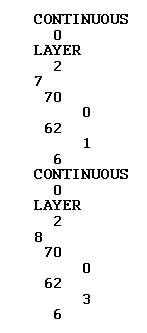
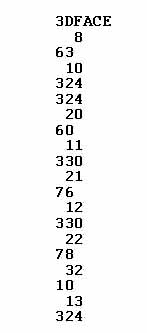
36023 36024
Continuous Lines are vectors, with an initial point and a terminal point, of a certain length that is to say, basically, "pen down at coordinate A x, y, move over to coordinate B x, y, move pen up".
And a 3D area in space, the listing, with more coordinates
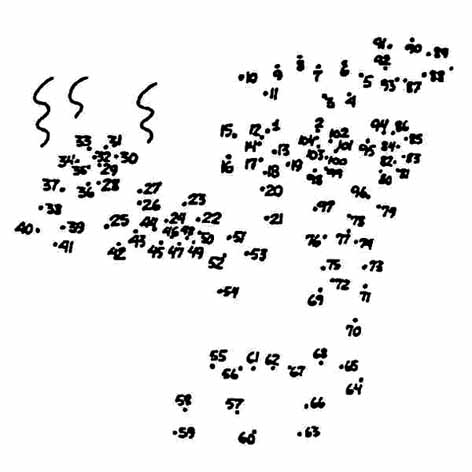
36030 numbers-image / riddle for children
That data interact with lines is quite obvious: Here the following rule applies: "Link the numbers in sequential order by a polygon line", and it does not matter whether you link the numbers in ascending or descending order, or whether you start somewhere in the middle. Two polygon lines, for example one which only links even numbers and one for odd numbers, produce different results. In conventional designs, certain well-entrenched conventions determine how letters are to be interpreted, for example as a word, lines, for instance as a margin, a pair of lines, for example as a wall. Yet, what all this presumes is that a willingness to communicate exists.
To want to understand "correctly" assumes a good deal of involvement, of effort, or in other words, the wish to understand something in a certain way determines the reading convention. This is why the pair of lines at the sheet boundary, at the edge of the drawing - that is, the cut edge - is interpreted as such, although it could also be seen as a wall.
In the binary house the rules governing communication are no longer determined by personal wishes, by subjective views and emotionality, but by the properties of the CPU, the central processing unit.
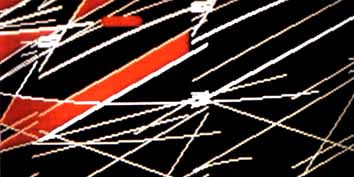

870331 87030
In the context of the binary house, the characters and symbols of the
data record are devoid of meaning. Lines are at first just lines, they
are visualizations, signifying nothing. Lines are strokes across the monitor.
Because they are not signifiers, because they are not charged with meaning,
they are easy to manipulate. And thus they can be managed, in whatever
combination: as a single line, as a pair of lines, as a grid, a pattern.
Binary lines are devoid of meaning.

87325
not even when magnified or zoomed can I find the meaning.
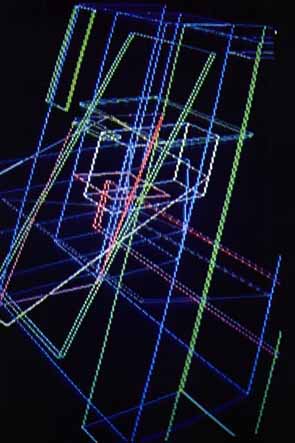
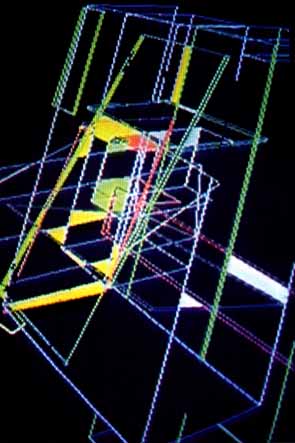
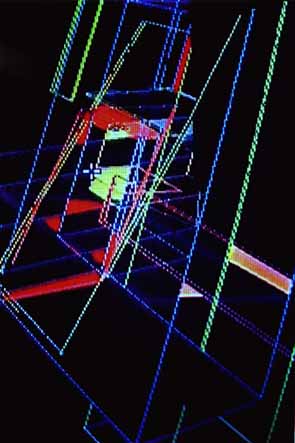
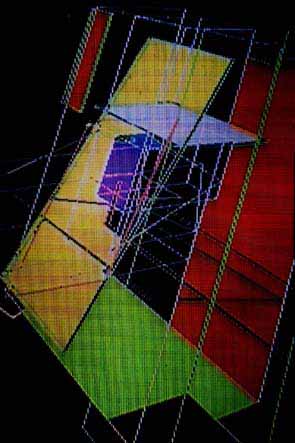
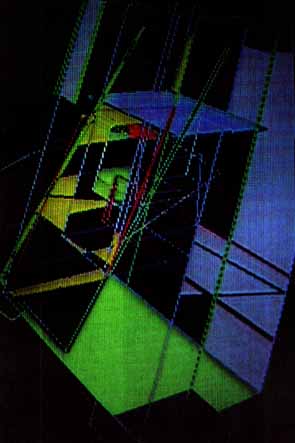
87326 87327 87328 87330 87332
Lines in space can be seen as planes or vice versa. The pictures are not one-to-one mappings, not definite. Their interpretation is ambiguous, so is their utilization, which might change from one moment to the next. The same lines as before, some spaces between the lines are coloured. As there is no convention for how pixels should be dealt with, their comprehension requires active confrontation.
As you all know, a sphere, no matter from which angle it is shown, always appears as a circle. Likewise, points always appear as points. For the monitor this implies that identical pixels simultaneously represent their own plan, elevation, section, etc. For this reason, the lines, the drawings of the binary house, can be interpreted equally well as the plan, the elevation, the section, the axonometric projection, the perspective. The square of a zoomed pixel is not the reduced geometrical shape of classical modernism, not a form of expression as it was for Loos, Malevich or Mondrian.
In this context, I should like to mention fractal geometry which differs significantly from Euclidean geometry, also as regards its conception of space. In fractal geometry - as opposed to the magnifying glass in Euclidean geometry - a zoomed image supplies no new information.
Amiga lines Lines are just one form of appearance of the binary house - bringing about visualization and presentation.
The inventory of forms of the binary house is supplied by the program: if a graphics program relies solely on cubes as cubatures - the design will be a cube, may be an addition of cubes.
2-D lines on the monitor or plot are 3-D dimensions in the data file. The point file is structured into objects, they are either linked by lines, triangular planes or simple stereometric bodies, depending on the program. In this way, the binary house is defined in the data file; it is virtually present in the CPU - in its entirety.
I would like to remind you of the conventional drawings - ground floor plan, upper floor plan, two sections, where it is never clear what happens in between.
The essential feature of the binary house is that it exists, that it is completely there. Therefore, any number of drawings (sections, plans, elevations, axonometric projections, etc.) of the latently present "building" can be immediately plotted, for example as a series of perspectives from different viewpoints.
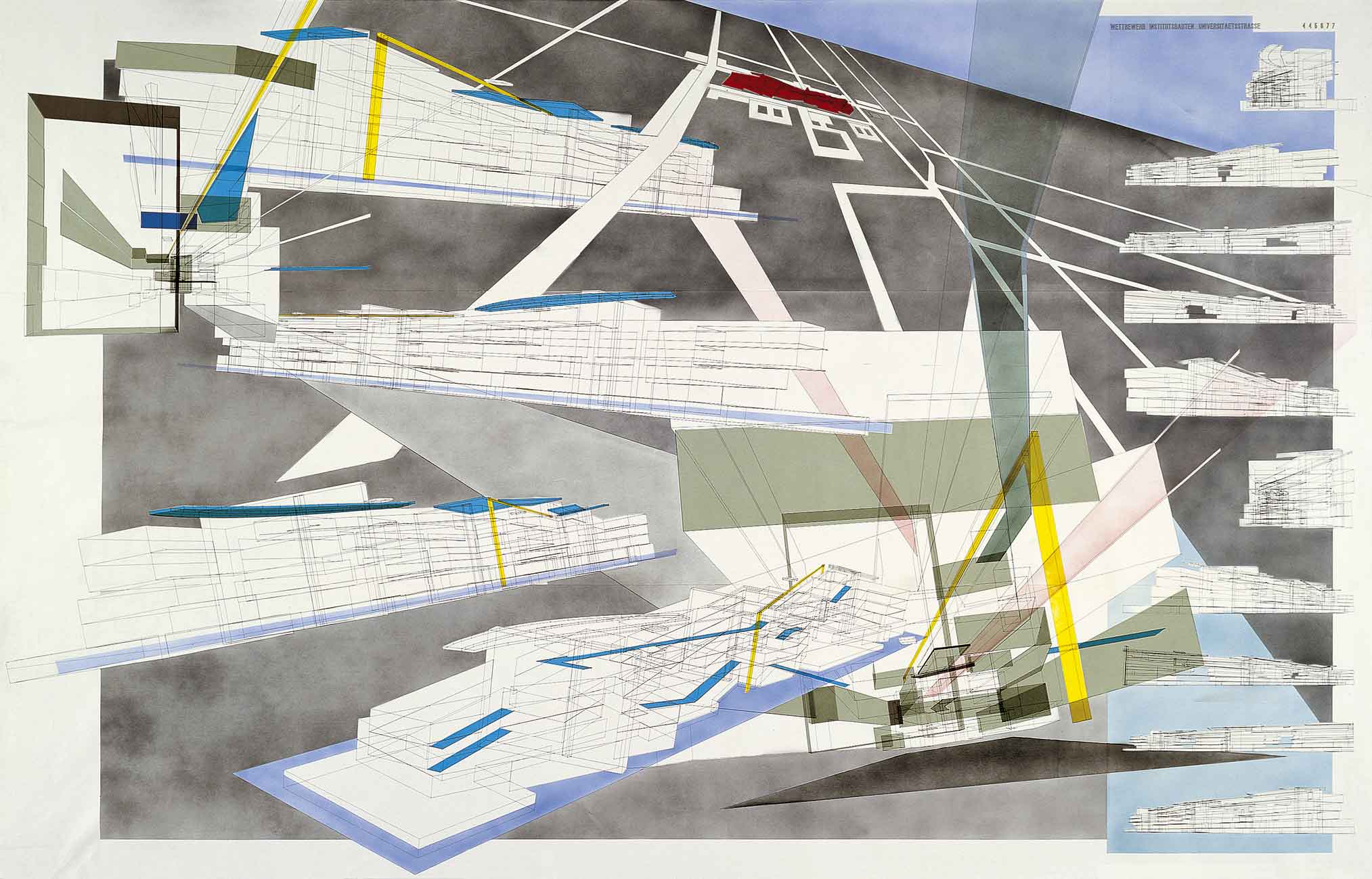
85176 University
These are extracts showing the material which is all simultaneously there in the CPU. All retrieved pictures are equivalent. Plans are just as arbitrary views as certain perspectives or axonometric projections, regardless of whether they are wire-frame, hidden-line or solid. Since a large number of perspectives can be produced effortlessly the "viewpoint" in architecture disappears. The multitude of perspectives permits the dissolution of simple stereometries into complex structures.
The absolute dimension for the binary house is one pixel, for the CPU it is one bit. The binary house itself - although present - is dimensionless. The fact that it is dimensionless is directly related to the namelessness of the lines.
Since the binary house is dimensionless, any reference to certain magnitudes implies external selection.
Zooming, shifting (up and down, right and left) deprive architecture of the "place"; orientation is no longer on the basis of spatial relations - the need for sheet boundaries is obviated, the south and hell are no longer down below.
The architectural place - secularized a long time ago - cancels itself out completely. Displaced itself, the binary house is in a place-less environment. Here, dislocation is a frequent phenomenon.
All those who have raced through a labyrinth game long enough, using a joy-stick, will probably understand this.
Just as the namelessness of the lines has cancelled out the functional relations, dimensionlessness and dislocation have nullified the spatial relations.
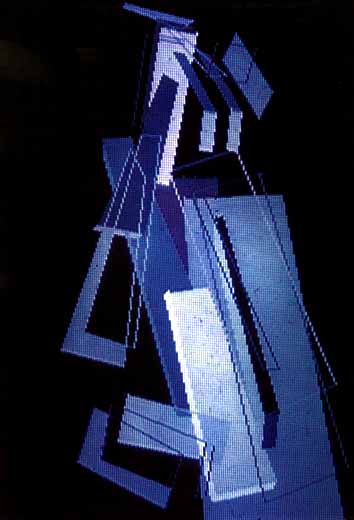
87334
Rooms are being scattered - to the detriment of all centralist movements - building elements are being disassembled.
The CPU operates in real time, and in zero-time, and compresses duration into simultaneity, thus shifting a multitude of time-dependent categories: For example, the CPU has no selective memory. The store is not organized according to historical principles, does not evaluate.
I am referring here to the current status in computer-technology; beyond these constraints, significant research is of course going on which proposes models along the line of Artificial Intelligence - this is where Oswald Wiener takes his departure.
Conventional designing methods make progress of the kind that Darwinism implies. From sheet of tracing paper to sheet of tracing paper one assumes that the latest always is an improvement on the previous one. CPU products, on the other hand, are all equivalent.
In a timeless space there is no memory, no lessons to be learnt from history. In a space devoid of meaning there are no value judgements. And therefore there is no basis for inferences.
The binary house is not hereditary, it simply lacks principles.
The aura of spatial quality, exterior and interior, opening out and closing, intimacy and publicity, gemutlichkeit, a cosy atmosphere, and agoraphobia - the terms remain as linguistic relics, to be used by the commentators.
These properties (the status) of the binary house together form its qualified abstraction, its main feature. This type of architecture is timeless. It is the extract filtered out by the CPU. It is dematerialized and purposeless, it is relieved of the "duty" of architectural reasoning.
Line is equal to line does not offer a different, a new concept, it offers a zero-concept.
The binary house is real as long as one is prepared to recognize its properties:
which are - let me summarize: The binary house exists only in the CPU. Binary lines are devoid of meaning. Lines are nameless, and therefore devoid of function. Drawings of binary houses are ambiguous projections. The inventory of forms is supplied by the CPU. The binary house exists in its entirety in the CPU. The presentation to the eye is momentary (present). All retrieved pictures are equivalent. There is no "architectural place". The binary house is dimensionless. The binary house is non-material, dematerialized architecture. The binary house can be built.
This specific view of the CPU output - the binary house - is the prerequisite for any interaction. Active, productive interpretation is required, not agreement and alignment with something "correct".
I should now like to explain the interaction, my theory of a design method which permits the computer, and of course the architect to play as active a role as possible (because just using a software package is not enough manipulation for the active planner).
This method is the prerequisite for the progressive integration of the CPU into the planning process. By overcoming retrospective planning procedures in architecture it finds different approaches and thus different results.
I do not participate in the myth that by analysis followed by synthesis the stationary character of designing could be overcome; what happens instead is, the interaction integrates specific electronic elements into the design process in various ways, observes what the result is. For it there are no a priori, no preconceived images.
The planner remains a hedonist.
The interaction with the computer manipulates the binary house.
By interacting, the bisociation of the CPU and the planner is initiated, so that a uniform new concept is arrived at, by linking two unrelated factors.
The command "build a villa", linked with the old adage "building is ordering" might be employed as an examplary conceptual construct for the start of the interactive manipulation:
A look at existing town and country architecture reveals what building has meant up till now. Quite apart from this, the ordering of data is the original function of EDP. In bisociation I can now get the CPU to present the ordering systems that are inherent in it, as architectural arrangements, by giving the following commands:
eg. sort the rooms by size! sort the rooms in alphabetical order! sort by materials! sort by material prices!
This is something the computer can do extremely quickly - the kind of architecture it produces must be seen.
This process circumvents, or completely eliminates quite effortlessly all conventional concepts of what a villa should look like, as well as traditional architectural concepts, such as strict adherence to functionalism, form fetichism or the constraints of "economy".
The process of the interactive bisociation presumes first of all the dissociation of the architect from pretensions of meaning, and in this the neutral, value-free structure of the CPU supports him. This dissociation from the familiar design and planning schemes, from well-entrenched conceptual patterns, is of utmost significance as it is this dissociation which permits unrestrained action in the subsequent stages.
A further prerequisite for the interactive bisociation is the untendentious use of the CPU, ie. in its original function (in our example: "Sort"); it has to be used as what it is (computer, data store), without imposing on it any teleologies.
The interaction does not require special "architectural" software packages, it will employ existing programs, will occasionaly create some new ones.
I should now like to show you how you can quickly develop your own program. This project for the new building of the Graz University was developed 1985 using a VAX.

85104

85105
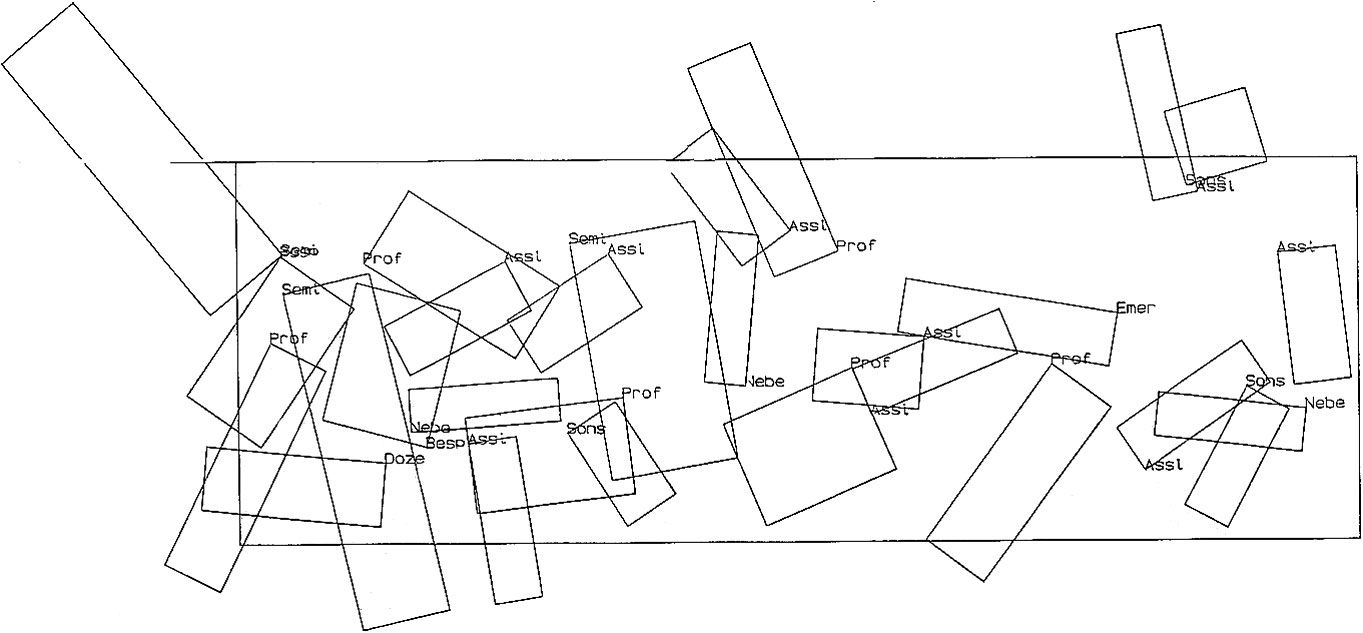

85107 85108

85109

85110
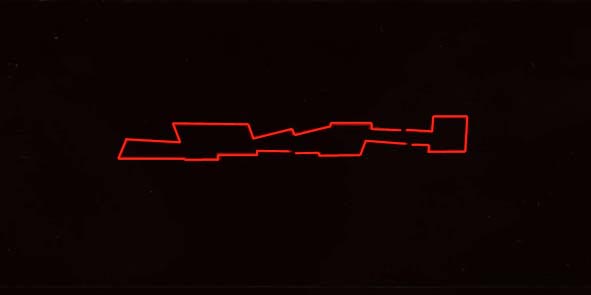
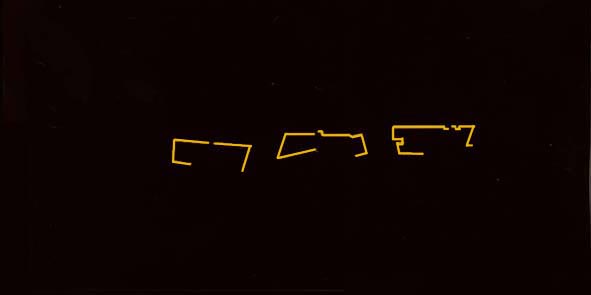
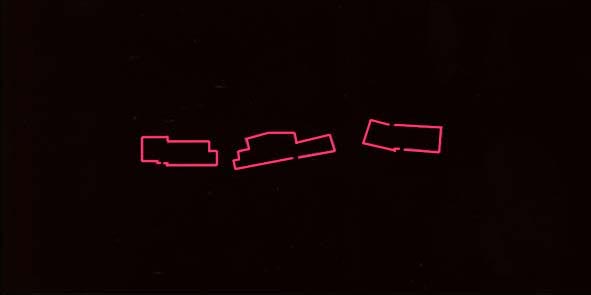
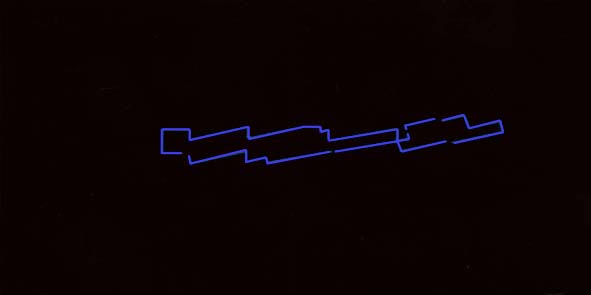
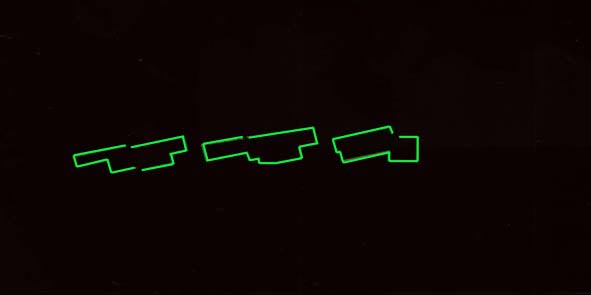
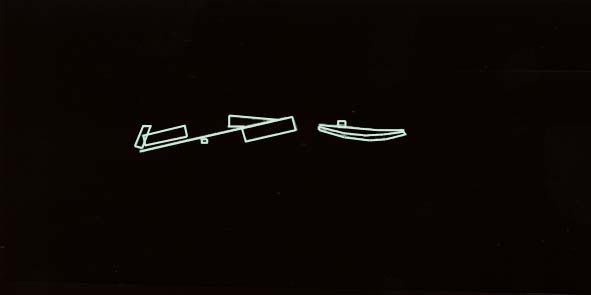
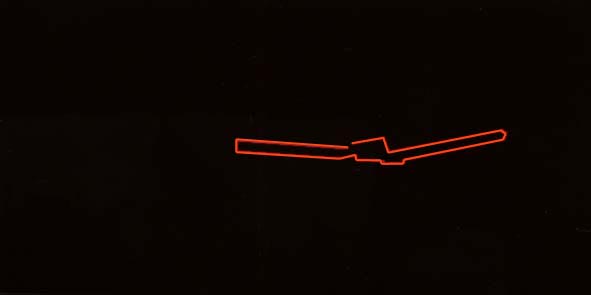
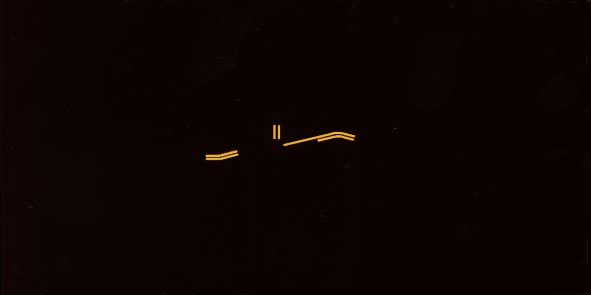
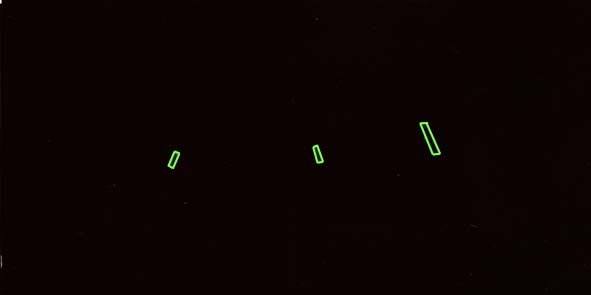

85121-85122-85123-85124-85125-85126-85127-85128-85132-85133
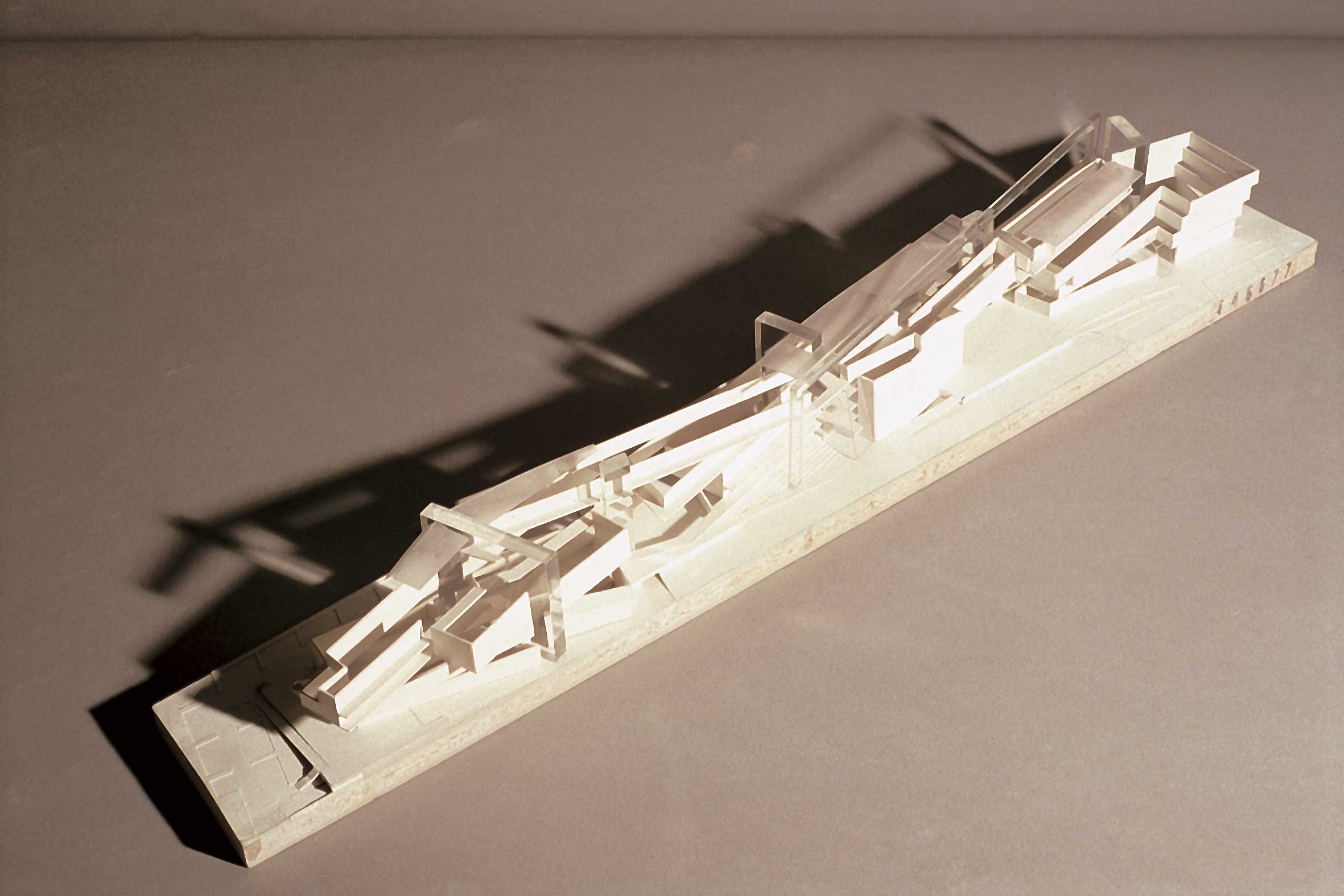
85169
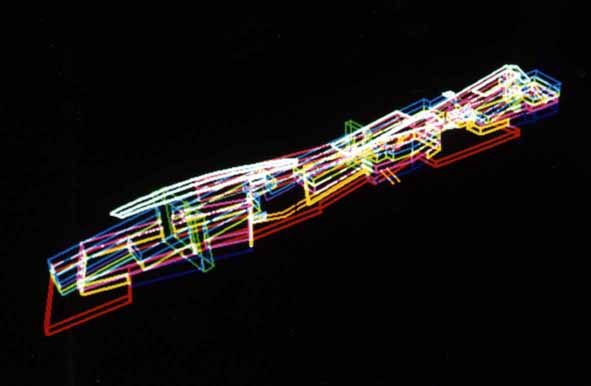
85208
The reformulation, from the original command "Design a university" was thus: calculate areas and proportions, distribute planes, rotate planes, etc.
Which program is to be run is determined during the reformulation: the original order in analogue form is changed to a command in interactive digital mode.
In fact, a separate program is used, and a ready-made perspective program.
This reformulation might on occasion be restricted by the available hardware, or it might orient itself to the programs.
In the example "Build a villa" or "Building is ordering" this reformulation was achieved by abstraction. Any other criteria can be employed as well, as eg. alienation:
A program to optimise pattern distribution in a clothes factory could be used as well. A variation on this could be that weft and warp are alienated and become the south orientation of rooms. The minimization of the waste material thus becomes the minimization of corridor areas.
In stage 1, the task, the architectural problem has to be reformulated so that the CPU can understand it, can manipulate it.
This first step is not only the preparation of the task set for the computer, it also requires a rethink on the part of the architect, from meaning-centred analog to the interactive-digital planning methods.
The pious wish, the architectonic vision, the formal gesture is obviated.
Even just the necessity to reformulate the task brings about a paradigmatic shift as regards the architectural conception.
The transition from analog designs to interaction can be described by the following comparison:
As the painter A. Cozens said in 1785 about new methods of assisting the invention in drawing of original compositions of landscape (and I quote) "To sketch is to transfer ideas from the mind to paper. To blot is to make varied spots ... producing accidental forms ... from which ideas are presented to the mind ... To sketch is to delineate ideas; blotting suggests them." (end of quote)
Applying this to interaction, it means interaction produces various bits and pixels, produces accidental shapes from which ideas are presented to the mind.
Designing (re)presents ideas (in terms of method of representation), delineates them, while interaction proposes ideas.
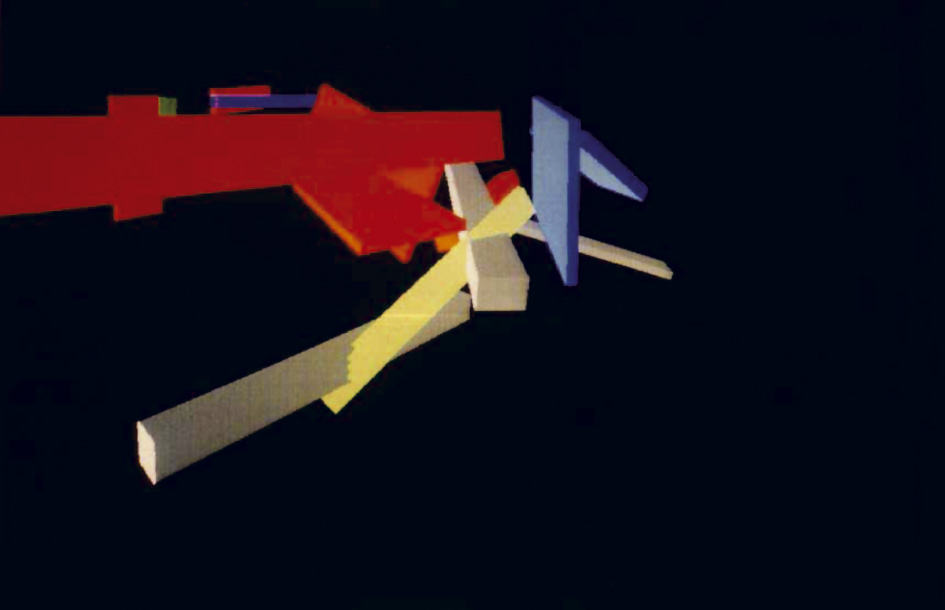
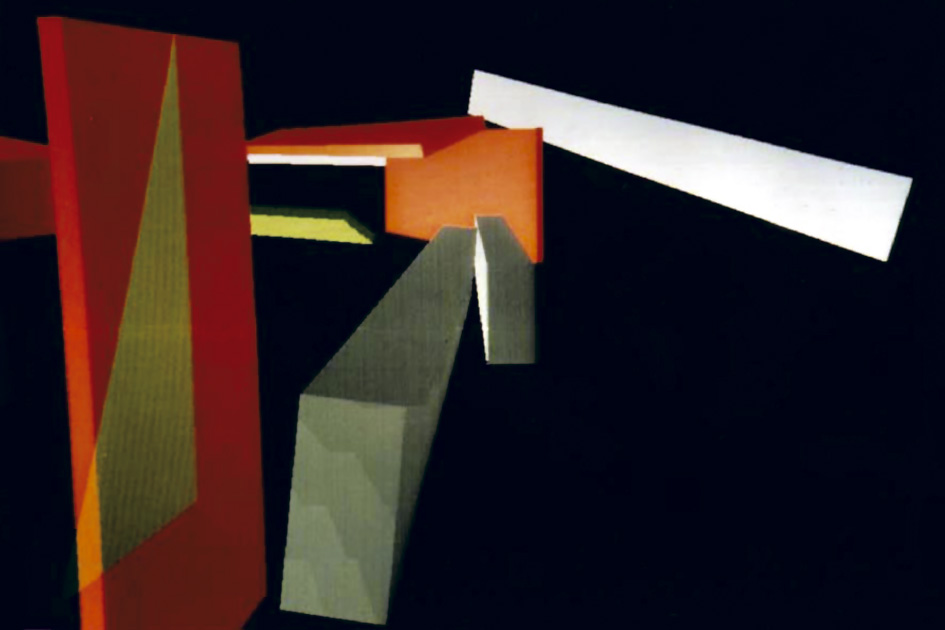
87203 Train-zoom-pretty-fast 87202
Train-zoom-pretty-fast
a slide for the exhibition for the 150 years aniversary of Austrian Railways, in 1987. On that occasion I developed together with Cezet Zechner one of my computer-companions, the socalled architecture generator which does the same as the university program I showed before, but now in 3 dimensions.
The CPU produces a number of detached "random shapes", which were not conceived, not derived, which are not tied to creative subjectivity, nor to the traditional regulations and rules of architecture.
I should like to remind you in this context of the role of "random processes" and the definition of "random" in chaos theory, the cyclic repetition of loops.
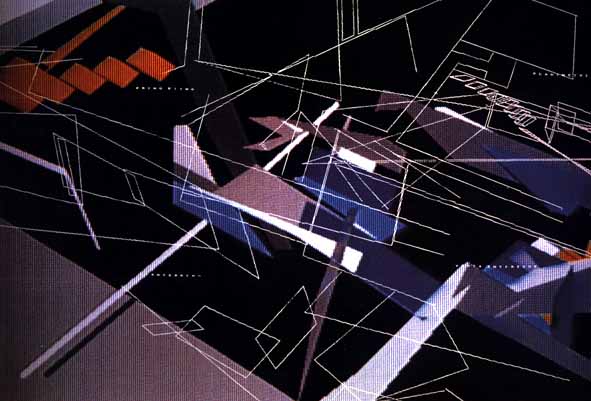
88003
An extract from my competition design "la casa piu bella del mondo" on Commodore Amiga, video-scape-metamorph and digi-paint program, produced in l988.
The output is a multitude of events (results). While these are computations, they are "random" in so far as they - the way they present themselves - cannot be adduced, as they cannot be predetermined.
The demand for strict control, for determinism, is counterproductive in this phase. Strict regulations would restrict the complex structures. The CPU does not determine anything by itself, it does not intend anything.
What is of significance, however, is the wealth of facettes produced. Different reformulations, different hard and software produces different output, digital sequences.
The interactivist is offered the binary house as the feed-back menu of the CPU output: - the reversed flow: from the output into the brain, from the extensive (external, extension) to the intensive (internal, intention, intensity).
The generator should at least perform until more material is available than catharsis can produce in the analog-singular act of creation. The usual interdependence-stammer about quality versus quantity does not bother the CPU: it keeps producing, endlessly, products of the same quality.
The availability of a large number of events is essential for the interaction, especially as it permits it to develop further. Amongst other things, it facilitates the recognition of essential elements of the events.
The detachment of the material that is thus produced is the most important characteristic of the interactive planning process. Although not determined in its abstractness, the project is ready and available. We are in the world of the object trouvee, the ready made, the binary house.
What can we now do with it:
the so-called summary procedure: The conventional mind always finds something that looks like ...; This works extremely well. Previous knowledge is superimposed, is read into everything, consciously or unconsciously. Interaction points to the antithesis of "I consciously did that!".
Provided that modified preferences are being accepted, the binary house can thus be built immediately: take one of the many lines and call it the drain pipe.
Ask the structural engineer which line he wants to use as the girder.
Ask the client where he wants his bedroom?
Determine the dimension! To say a line is 1 m or 5 m long determines the content, the function, even before it is named, or in addition to it.
That something works (eg. that the water drains from the bath tub) is no longer the aim but the effect of the naming process.
During the interaction lines are defined as certain "building elements" once buildings are to be constructed. The naming process decides the purpose, and my taste decides what is pretty!
The advantage of the interaction: the interpretation, the purpose, the use it is put to, the application are much more amusing and flexible than rigidly limited planning, than the design of an anticipated building can be.
So this is the summary procedure: bits and pixels, dots, lines, areas (cubatures) are generated, the binary house is decoded as villa.
In this phase, interaction treats the lines in the same way as the smart users deal with the concrete products of the architects - they arrange them whichever way they want. What we see here is flexibility, not spirits shifting tables around on the monitor.
It is obvious that this summary procedure undermines the maintenance of the abstract state. However, further interactive steps can postpone the concretisation (the interpretation of the product as tangible object with a specific function).
The abstract state should be maintained as long as possible, as the usual tendency to increasingly specify material and function at each stage of the planning process demolishes the binary house. Material and function, these elements of conventional architecture, are initially not dealt with at all, or rather they are seen as cryptic.
As an example of the interaction I should now like to show you the following competition design: pure picture processing
The competion for an urn cemetary (1984)
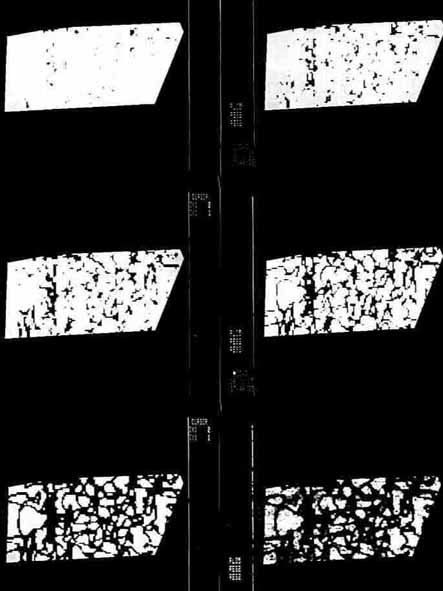
85002_6
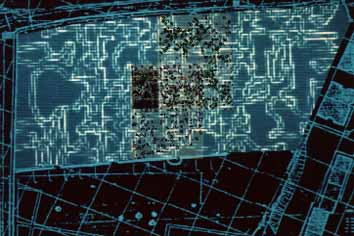 85017
85017
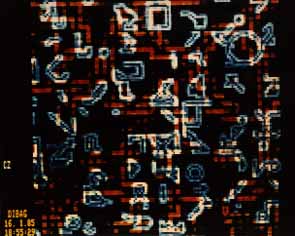
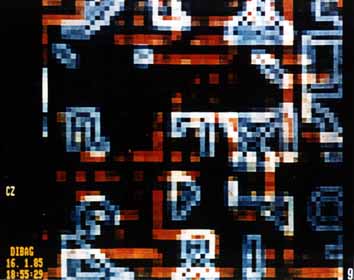
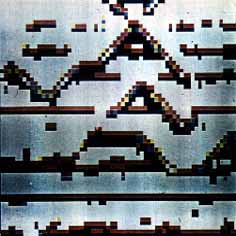
85019 85020 85022
As the understanding of events is interchangeable, ambiguity does without the rushed, one-to-one interpretation. And thus further events are allowed to follow.
Additional formulations and new reformulations can be found by recycling, by treating colours (modifications), lines, dots as if their meaning was really unknown:
All the things they could be!
The initial position is now significantly changed, the possible formulations are much less restricted than the analog formulation of the task, and the first reformulation were.
Aware of this, new interactions and CPU loops are being triggered, as before; events are again generated.
The interactive production of architecture develops into a cornucopia whose main feature is complexity. The result of one operation provides sufficient material for several projects. The amount produced was a problem for the industrial era, for the age of interaction it is a trivial issue.
The strikingly large number of pixels in the presentation should not divert your attention from the fact that interaction introduces totally different parameters into the projects right from the start.
Interactive production with the CPU is thus a specific conceptual and methodological approach for an independent architecture, the following axioms apply:
Interaction transforms the binary house. It knows no preconceived pictures. The CPU's actions are non-tendentious and are to be applied as such. It presumes the dissociation of the architect from meaning-centred attitudes. It does not require specific architectural programs. All the output produced by the CPU is of the same quality. Subsequent products are not improvements on previous ones. Abstraction should be maintained as long as possible. In an inventive way, novelties and misunderstandings are maintained. Naming determines the function. Additional formulations are found by recycling. The binary house is declared a "building" to be realized.